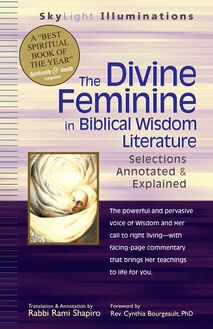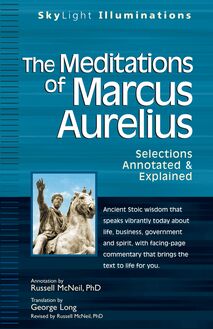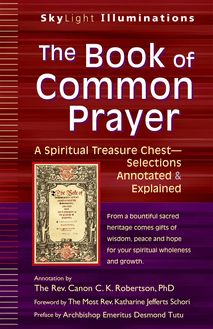The Infancy Gospels of Jesus , livre ebook
107
pages
English
Ebooks
2011
Vous pourrez modifier la taille du texte de cet ouvrage
Obtenez un accès à la bibliothèque pour le consulter en ligne En savoir plus
Découvre YouScribe en t'inscrivant gratuitement
Découvre YouScribe en t'inscrivant gratuitement
107
pages
English
Ebooks
2011
Vous pourrez modifier la taille du texte de cet ouvrage
Obtenez un accès à la bibliothèque pour le consulter en ligne En savoir plus
Publié par
Date de parution
30 juin 2011
Nombre de lectures
0
EAN13
9781594733611
Langue
English
Early Christian legends of divine power, miraculous events, fear and admiration can inform your own spiritual journey.
The three principal infancy gospelsthe Infancy Gospel of James, the Gospel of the Infancy, and the Infancy Gospel of Thomasare accounts of the births and early lives of Mary the Virgin Mother, and Jesus. Originating in the second through fifth centuries, these apocryphal stories are fictions but nevertheless of great historical interest in terms of the beliefs and storytelling of early Christians, for they are the sources of well-known Christian legends as well as of some of Christianitys beloved heroes and heroines.
This fascinating and accessible exploration of formative influential narratives takes you deep into the early Christian religious thinking that provides the basis for Marys biography, ideas about her purity, as well as the prayers, feasts, and iconic representations that celebrate her life. These extraordinary folktales also provide some shocking imagery of the young Jesus, the incarnation of Godequally human and divineas he learns to control his supernatural powers and apply them for good.
Now you can experience the mystery and amusement of these charming folktales without any previous knowledge of early Christian history or thought. This SkyLight Illuminations edition offers insightful yet unobtrusive commentary that explains references and philosophical terms, shares inspiring interpretations, and gives you a deeper understanding of the sources of devotion Christians feel for Mary and the holy infant Jesus.
Publié par
Date de parution
30 juin 2011
Nombre de lectures
0
EAN13
9781594733611
Langue
English
Selected Books in the SkyLight Illuminations Series
The Art of War-Spirituality for Conflict: Annotated & Explained
Bhagavad Gita: Annotated & Explained
The Book of Mormon: Selections Annotated & Explained
Celtic Christian Spirituality:Essential Writings-Annotated & Explained
Chuang-tzu: The Tao of Perfect Happiness-Selections Annotated & Explained
Confucius, the Analects : The Path of the Sage-Selections Annotated & Explained
Dhammapada: Annotated & Explained
The Divine Feminine in Biblical Wisdom Literature: Selections Annotated & Explained
Ecclesiastes: Annotated & Explained
The Gospel of Philip: Annotated & Explained
The Gospel of Thomas: Annotated & Explained
Hasidic Tales: Annotated & Explained
The Hebrew Prophets: Selections Annotated & Explained
John and Charles Wesley: Selections from Their Writings and Hymns-Annotated & Explained
The Meditations of Marcus Aurelius: Selections Annotated & Explained
Native American Stories of the Sacred: Annotated & Explained
Philokalia: The Eastern Christian Spiritual Texts-Annotated & Explained
Proverbs: Annotated & Explained
The Qur an and Sayings of Prophet Muhammad: Selections Annotated & Explained
Rumi and Islam: Selections from His Stories, Poems, and Discourses-Annotated & Explained
The Sacred Writings of Paul: Selections Annotated & Explained
Saint Augustine of Hippo: Selections from Confessions and Other Essential Writings-Annotated & Explained
St. Ignatius Loyola-The Spiritual Writings: Selections Annotated & Explained
The Secret Book of John: The Gnostic Gospel-Annotated & Explained
Tanya , the Masterpiece of Hasidic Wisdom: Selections Annotated & Explained
Tao Te Ching: Annotated & Explained
The Way of a Pilgrim: The Jesus Prayer Journey-Annotated & Explained
Zohar: Annotated & Explained
The Infancy Gospels of Jesus: Apocryphal Tales from the Childhoods of Mary and Jesus-Annotated & Explained
2009 Quality Paperback Edition, First Printing Text, annotation, and introductory material 2009 by Stevan Davies Foreword 2009 by A. Edward Siecienski
All rights reserved. No part of this book may be reproduced or reprinted in any form or by any means, electronic or mechanical, including photocopying, recording, or by any information storage and retrieval system, without permission in writing from the publisher.
For information regarding permission to reprint material from this book, please mail or fax your request to SkyLight Paths Publishing, Permissions Department, at the address / fax number listed below, or e-mail your request to permissions@skylightpaths.com.
Library of Congress Cataloging-in-Publication Data
The infancy Gospels of Jesus : apocryphal tales from the childhoods of Mary and Jesus, annotated & explained / translation and annotation by Stevan Davies ; foreword by A. Edward Siecienski.-Quality pbk. ed. p. cm. Includes bibliographical references (p. ). ISBN 978-1-59473-258-4 (quality pbk.) 1. Apocryphal infancy Gospels. I. Davies, Stevan L., 1948- II. Protevangelium Jacobi. English. III. Gospel of the infancy. English. IV. Gospel of Thomas (Infancy Gospel) English. BS2850.A3I54 2009 229'.8-dc22 2009008927
10 9 8 7 6 5 4 3 2 1
Manufactured in the United States of America Cover design: Tim Holtz Cover art: iStockphoto.com/Jaroslaw Baczewski
SkyLight Paths Publishing is creating a place where people of different spiritual traditions come together for challenge and inspiration, a place where we can help each other understand the mystery that lies at the heart of our existence.
SkyLight Paths sees both believers and seekers as a community that increasingly transcends traditional boundaries of religion and denomination-people wanting to learn from each other, walking together, finding the way .
SkyLight Paths, Walking Together, Finding the Way, and colophon are trademarks of LongHill Partners, Inc., registered in the U.S. Patent and Trademark Office.
Walking Together, Finding the Way ® Published by SkyLight Paths Publishing A Division of LongHill Partners, Inc. Sunset Farm Offices, Route 4, P.O. Box 237 Woodstock, VT 05091 Tel: (802) 457-4000 Fax: (802) 457-4004 www.skylightpaths.com
Contents
Foreword by A. Edward Siecienski, PhD
Introduction: Tales from the Childhood of Mary and Jesus
The Gospel of James
1. Joachim and Anne: The Gift of Mary
2. Mary: The Story of Her Birth
3. Mary: Raised in Blessing and Purity
4. Joseph: Mary s Protector
5. Mary: Miraculous Conception
6. Joseph and Mary: Accused and Tested
7. Mary and Joseph: The Christmas Story
8. The Magi: In Search of a King
9. Herod: The Murder of Zechariah
The Gospel of the Infancy
10. A Cave, Not a Stable: The Nativity Story
11. A Sinful Mary and the Anointing of Christ
12. Jesus in the Temple
13. The Magi and Herod: Varying Views of Jesus
14. Into Egypt: The Holy Family in Flight
15. Exorcising a Deaf and Dumb Demon
16. The Bridegroom Mule: A Brother Restored
17. Bandits: In Them, Jesus Sees His Destiny
18. Balsams in His Path: The Holy Child Returns
19. The Co-Wife s Punishment
20. Satan s Bite: The Young Judas Iscariot
21. Divine Mischief: The Boy Jesus at Play
22. The King, Christ and a Snake
The Infancy Gospel of Thomas
23. The Introduction to the Infancy Gospel of Thomas
24. Clay Sparrows: A Dark Miracle
25. The Vengeful Boy: Christ in Conflict
26. The Young Healer Explores His Powers
27. Divine Carpenter: Jesus Adjusts His Elder s Mistakes
28. The Pupil Teaches His Teacher
29. The Miraculous Physician
30. In the House of My Father: Jesus in the Temple
Notes
Suggestions for Further Reading
About SkyLight Paths
Copyright
Foreword
by A. Edward Siecienski, PhD
Whenever I teach introductory courses in Christian theology, I allot time to the Church s doctrines concerning Mary-the Council of Ephesus s affirmation that she was the Theotokos ( God bearer ) as well as the Roman Catholic dogmas of the Immaculate Conception and Assumption. Although the latter teachings sometimes raise questions in the minds of my Protestant students, it is the doctrine of Mary s three-fold virginity that elicits the strongest reaction and, often enough, the strangest looks. It is one thing to believe Mary conceived as a virgin ( virginitas ante partum ), but quite another to accept that she remained a virgin unto death ( virginitas post partum ) When I try to explain the third aspect of Mary s virginity, the concept of virginitas in partu (i.e., that she remained a virgin even in the process of giving birth), students move beyond simple incredulity. Many of them just laugh, as if I had told some sort of joke. I assure them that I am serious, and that this is a teaching of both the Catholic and the Orthodox Churches. They ask, Where did this come from? It s not in the Bible, is it? I reply, Not exactly, and begin reading from the Protoevangelion of James (which has also been called the Gospel of James) and the story of the unbelieving maidservant Salome.
Perhaps no other apocryphal book has been as influential on Church teaching (especially in the Orthodox and Catholic traditions) as the Protoevangelion of James. Despite its condemnation in official documents, it has dominated the development of the Marian legend, providing much of the basic material for Mary s biography. 1 The Orthodox liturgy regularly invokes the prayers of the holy ancestors of God, Joachim and Anna. 2 Mary s birth is celebrated in both the East and the West, as is the feast of her Entrance (Presentation) in the Temple. Icons of the Nativity, which adorn churches throughout the world, regularly show Mary and child in a cave, with midwives and an aged Joseph nearby. The basis for all these prayers, feasts, and iconic representations is the Protoevangelion of James.
Many of the fathers of the Church were familiar with the Protoevangelion and referenced it freely. Justin Martyr (famous for his second-century Apology ) may have used it, and the great third-century exegete Origen of Alexandria explicitly mentions it to support the belief that the brothers of Jesus were children of Joseph by his first wife. The Byzantine hymnographer Romanos the Melodist closely followed the narrative of the Protoevangelion in his Hymn on the Birth of Mary and recent scholarship has begun to look more carefully at the influence of James on later Mariological piety, especially in the eighth century. 3 Even as late as the fourteenth century, Gregory Palamas, Metropolitcan of Thessalonica and defender of hesychasm, utilized the Protoevangelion for his homilies on the feasts of the Theotokos. 4
Yet despite its widespread use (especially in the Christian East), by the late fifth century, the Gelasian Decree listed the Protoevangelion among the apocryphal books to be avoided by believing Christians. 5 This is in many ways understandable, especially given its mid- to late-second-century origin, which would have failed to meet two of the necessary criteria for inclusion in the canon-apostolicity and antiquity. Yet the orthodoxy of the Protoevangelion did not seem to be at issue, as the Church continued to rely on it as the basis for certain liturgical celebrations and teachings concerning the Mother of God.
The same cannot be said about the Infancy Gospel of Thomas, a book that even today shocks and surprises the pious Christian reader. Christians remember Jesus as the loving savior who healed the sick and raised the dead. To read about a petulant, all-powerful child who regularly struck down and blinded those who crossed him is to be confronted with another Christ. And even though elements of the book have made their way into Christian art (not to mention the Qur an [5:110]), the Infancy Gospel of Thomas does not even come close to the Protoevangelion in terms of its impact.
Up to now there have been few works on the infancy gospels that were both scholarly and accessible. True, there was a recent brief period (post- Da Vinci Code














